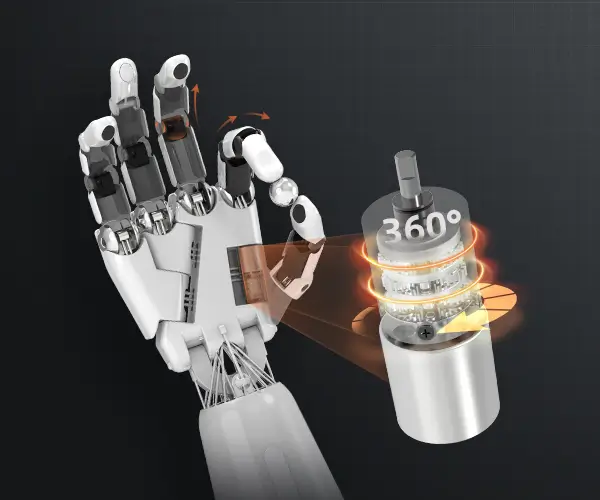Sure! Here's the first part of the soft article based on the theme "LEGO Power Functions Servo Motor Torque."

Imagine a world where your LEGO creations don’t just stand still but move with purpose, precision, and power. From intricate crane systems to animated robots, the secret sauce behind these dynamic models is often the humble servo motor—particularly, the LEGO Power Functions servo motor. Whether you're an enthusiast, a hobbyist, or a budding engineer, understanding the role of torque in these miniature motors unlocks a universe of creative potential.
The Power Behind the Movement: What is a Servo Motor?
At its core, a servo motor is a type of motor designed to provide precise control of angular or linear position, velocity, and acceleration. Unlike simple motors that run continuously, a servo motor is a feedback system—constantly adjusting to reach and hold a specific position based on signals it receives. Think of it as a highly disciplined driver who, upon receiving a command, navigates to a calculated point and stays there.
LEGO Power Functions servo motors are compact yet capable units designed to bring LEGO builds to life. They are commonly used in robotic arms, steering mechanisms, or any application where controlled, accurate movement makes the difference. But what truly makes these motors fascinating is their torque—the rotational force that they produce.
Deciphering Torque in LEGO Servo Motors
Torque, in the simplest terms, is a force that causes an object to rotate around an axis. In LEGO servo motors, torque determines how much resistance the motor can handle before it stalls or cannot turn further. It’s like a person trying to open a stuck door—some are strong enough to push through, while others give up quickly; that strength is akin to torque.
The LEGO Power Functions servo motor boasts specific torque ratings, often measured in Newton-meters (Nm) or kilogram-centimeters (kg·cm). These ratings are crucial because they directly impact what your model can achieve. For instance, if you want a robotic arm to lift a small object, you'll need a motor with enough torque to overcome gravity and any resistance in the system.
In practical terms, the torque rating influences how heavy a load your LEGO servo can handle without slipping or losing position. It’s like choosing the right engine for your toy car: a small, underpowered motor makes it sluggish, while a high-torque motor ensures swift acceleration and the ability to climb steep inclines.
The Impact of Torque on Building Possibilities
Think of torque as a gateway to dynamic, functional LEGO models. When selecting a servo motor, matching its torque capability to your project’s demands is vital. For example, in building an automated door, the force needed to move the door smoothly depends heavily on the motor’s torque. In contrast, if you're designing a delicate figurine with moving arms, minimal torque suffices.
One of the beauties of LEGO Power Functions is that the system allows for modularity. You can combine different motors to amplify power or refine control. But always remember: more torque typically means more energy consumption and sometimes larger or heavier motors, which could influence your design choices.
Understanding Torque Ratings in LEGO Servo Motors
LEGO’s official Power Functions servo motors generally come with specified torque ratings. For example, a typical LEGO servo might produce around 3.5 kg·cm (or approximately 0.34 Nm) of torque. These figures are based on testing conditions and provide a benchmark, but real-world applications can vary based on factors like gear ratios or mechanical leverage used in the build.
In addition, The torque you need depends on the mechanical advantage you can create with gears. Using gears, you can multiply the torque output—meaning a smaller motor can still move heavier loads by changing gear ratios, much like a bicycle’s gear system boosts your climbing ability.
As you plan your next LEGO project, pay close attention to the torque ratings of the servo motors you're considering. Even a slight misjudgment here can lead to models that fail under pressure or don't perform as intended. For hobbyists, understanding this rating becomes second nature when designing complex mechanisms or animating intricate movements.
Balancing Torque and Speed
While torque is pivotal, it’s not the only factor. Most LEGO servo motors balance torque with speed—the rate at which they rotate. Increasing torque often means sacrificing some speed, which can be desirable or undesirable depending on your application. For instance, a robotic arm lifting objects slowly with high torque might be just what you need, while a quick-moving racecar model demands lower torque but higher speed.
This balance reflects a fundamental trade-off in all motor design, and the LEGO Power Functions system isn’t exempt. Choosing the right motor, gear ratios, and control systems allows builders to fine-tune their creations’ performance to match their vision.
Practical Tips for Maximizing Torque in Your LEGO Builds
Use Gear Ratios Effectively: Gear up to increase torque where needed, but keep in mind that this often reduces rotational speed. For heavy lifting or forceful movements, a gear ratio that boosts torque is advantageous.
Limit Load and Resistance: Design your mechanisms to minimize unnecessary friction and resistance, ensuring the servo motor can perform at its best.
Pair Motors Strategically: Use multiple servo motors in tandem for complex tasks requiring more power, but ensure your power supply can handle the increased load.
Choose the Right Servo for the Job: Not all motors are created equal. Match your motor’s torque rating to your project’s specific needs for smooth operation and longevity.
In the upcoming second part, we’ll delve into advanced applications of LEGO Power Functions servo motors, explore how to troubleshoot torque-related issues, and look at innovative ways to push the boundaries of your LEGO robotics. Stay tuned—it’s an exciting ride into the mechanics of movement and control!
Leveraging innovations in modular drive technology, Kpower integrates high-performance motors, precision reducers, and multi-protocol control systems to provide efficient and customized smart drive system solutions.




































